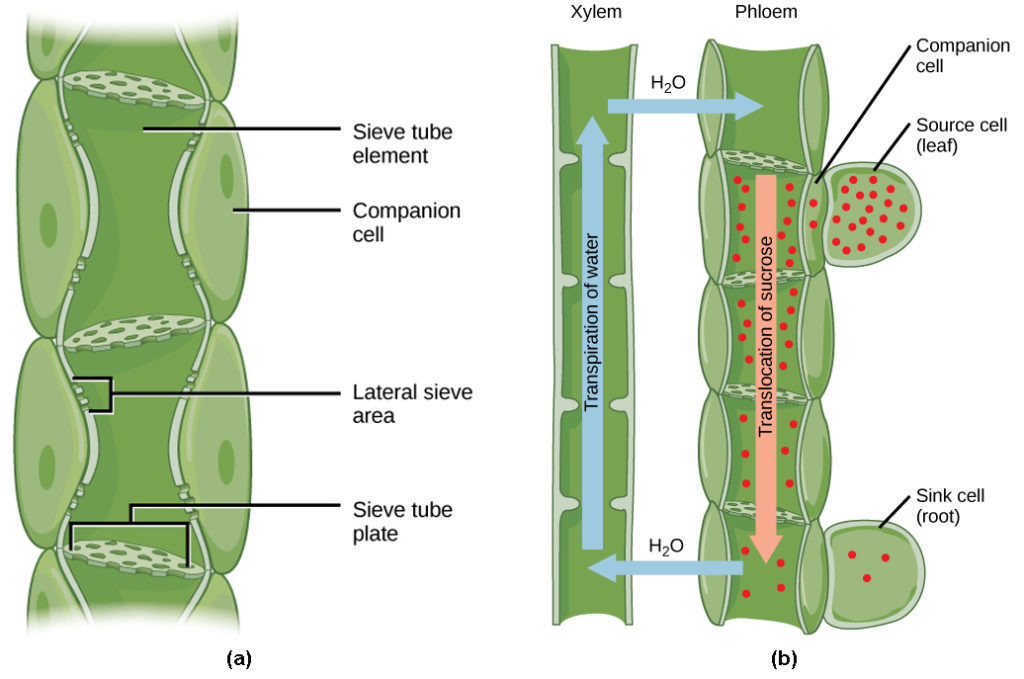Agriculture Notes On – Translocation – For W.B.C.S. Examination.
কৃষি নোট – স্থান চুতি – WBCS পরীক্ষা।
Translocation is the process within plants that functions to deliver nutrients and other molecules over long distances throughout the organism. Translocation occurs within a series of cells known as the phloem pathway, or phloem transport system, with phloem being the principal food-conducting tissue in vascular plants. Nutrients are translocated in the phloem as solutes in a solution called phloem sap.Continue Reading Agriculture Notes On – Translocation – For W.B.C.S. Examination.
The predominant nutrients translocated are sugars, amino acids, and minerals, with sugar being the most concentrated solute in the phloem sap. Various cell types utilize these nutrients to support their requirements for life or store them for future use. Because translocation is responsible for the delivery of nutrients to developing seeds and fruits, this process is critical to the achievement of optimal crop yield. It also accounts for the ultimate nutritional composition of plant foods important to humans.
Various plant hormones, proteins, and nucleic acids are also moved throughout the plant via translocation. Hormones act as cues, or signals, to stimulate distant cells to alter their pattern of growth or to adjust various cellular machinery.
Examples of such signaling events would be the conversion of vegetatively growing cells into reproductive tissues (i.e., flowers); an enhancement in the ability of root cells to absorb needed mineral ions from the soil (e.g., iron, zinc); or the synthesis of specific compounds in distant leaves to deter pathogens (e.g., insect feeding, fungal infections). Thus, the translocation of information molecules makes it possible for plants to correctly sense and respond to varying conditions or challenges in their environment.
Pathway Of Translocation
The movement of sugars and other molecules generally follows a path that originates in plant organs where sugars (the primary solute) are made and terminates in regions where these nutrients are utilized. The organs where the pathway begins are called source regions, or sources, and the ends of the pathway are referred to as sink regions, or sinks. The predominant organ for the manufacture of sugars is the leaf, which can take in carbon dioxide and light energy to produce sugars through the process of photosynthesis. These sugars can be used locally by the leaf or can be translocated to the rest of the plant. Leaves are generally considered the primary source regions, but it should be noted that only fully expanded, mature leaves can act as sources. Newly emerging leaves are unable to fully nourish themselves with their own sugar production, and thus they act as sink regions until they reach full maturity.
Other sink tissues include root systems, which cannot carry out the process of photosynthesis and must be fed by the leaves, and developing reproductive tissues, such as seeds and fruit, which store nutrients for future use. Additional storage organs that are translocation sinks and which are important human food crops include tubers (e.g., potatoes and yams) and tap roots (e.g., carrots and beets).
Plant structures that lie between terminal source and sink tissues, such as the stem of an herbaceous plant, the trunk and branches of a tree, or the petiole of a leaf, make up the translocation pathway. All of these structures contain numerous living cells that require nourishment and, thus, these pathway tissues can also function as sinks.
In certain cases, however, they serve dual roles, because in some plants (e.g., cereals such as rice and wheat) the stems act as temporary storage organs for nutrients. At late stages in the plant’s life cycle, these stems are converted to source regions that provide nutrients for the developing seeds. Various non-leafy green tissues that can conduct photosynthesis also can serve as sources; pea pods, for instance, can translocate sugars and other nutrients to the developing pea seeds.
Please subscribe here to get all future updates on this post/page/category/website


 +919674493673
+919674493673  mailus@wbcsmadeeasy.in
mailus@wbcsmadeeasy.in







































































































